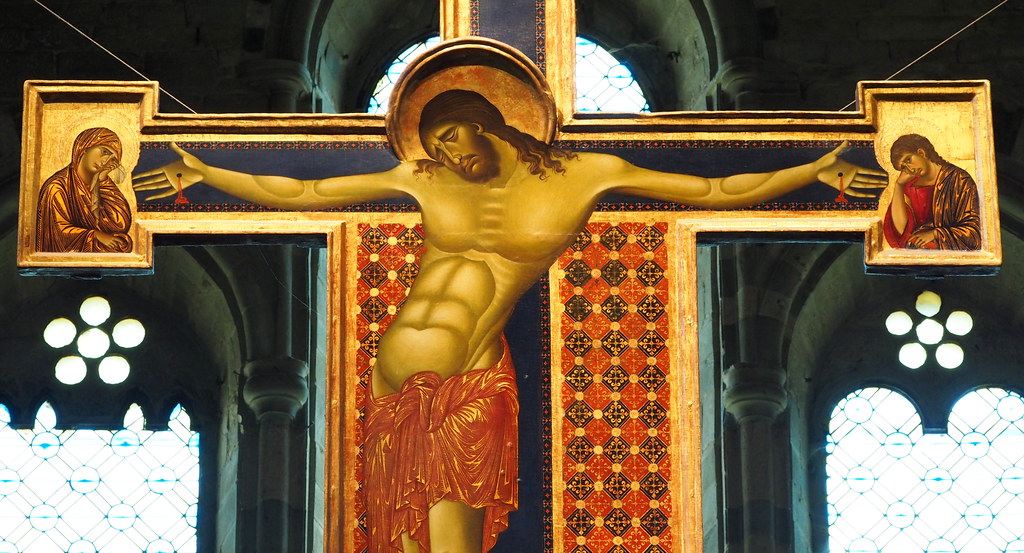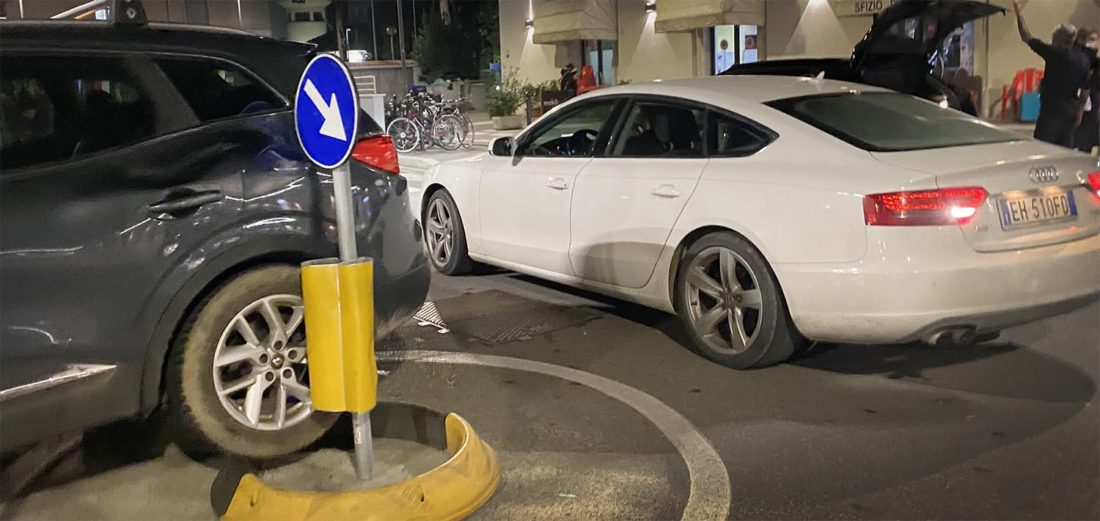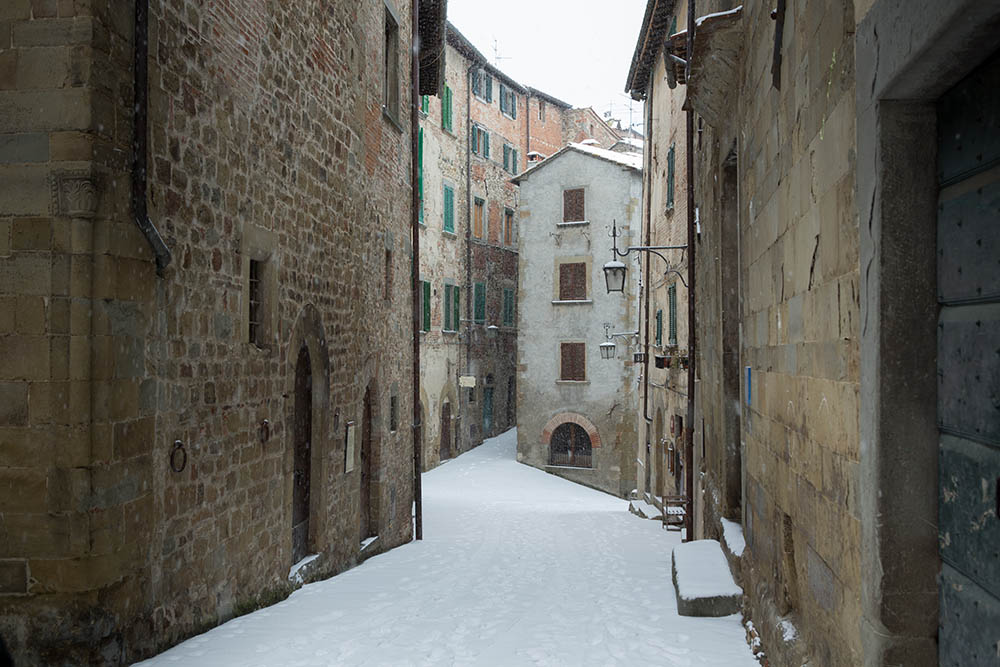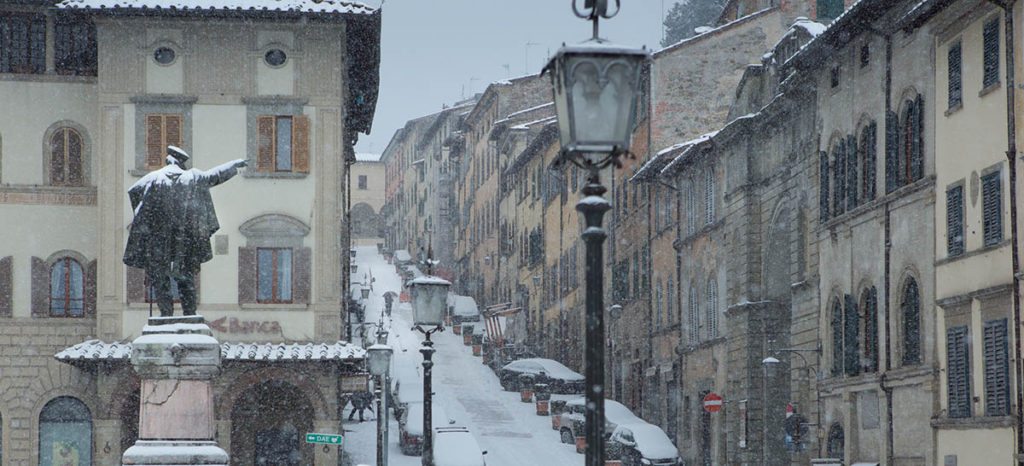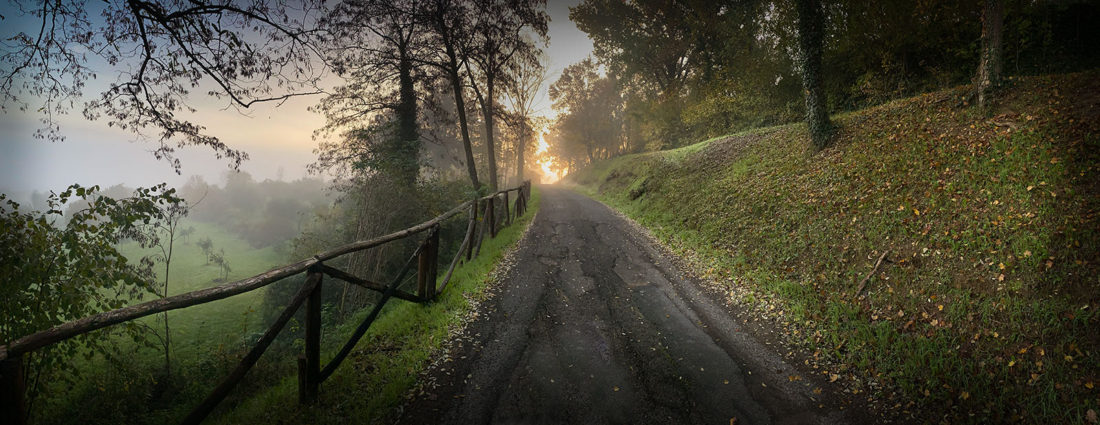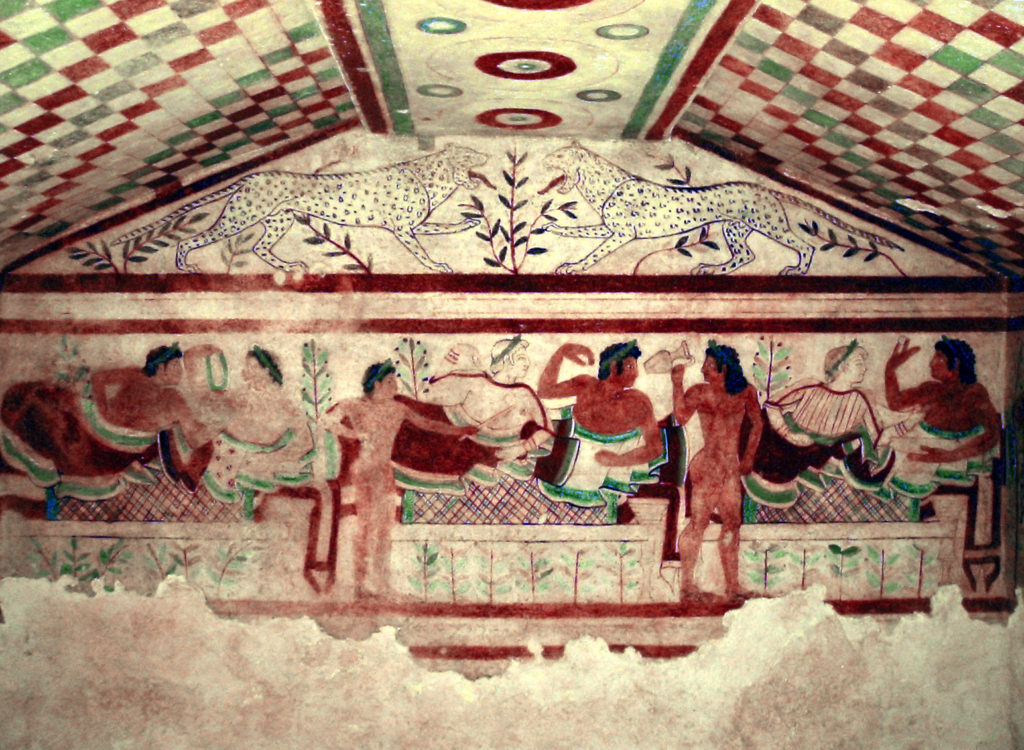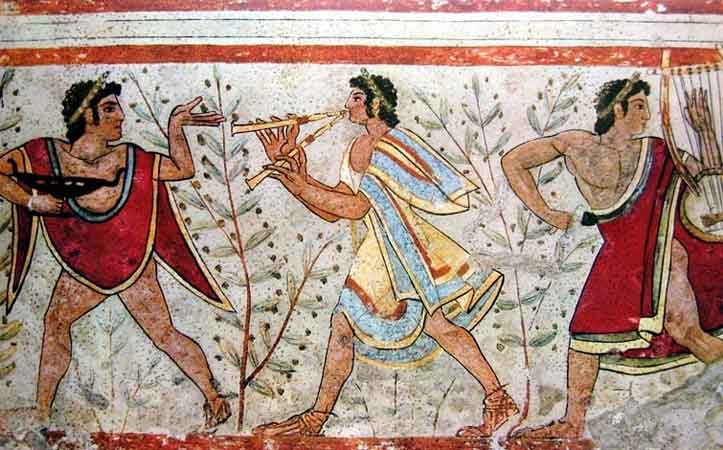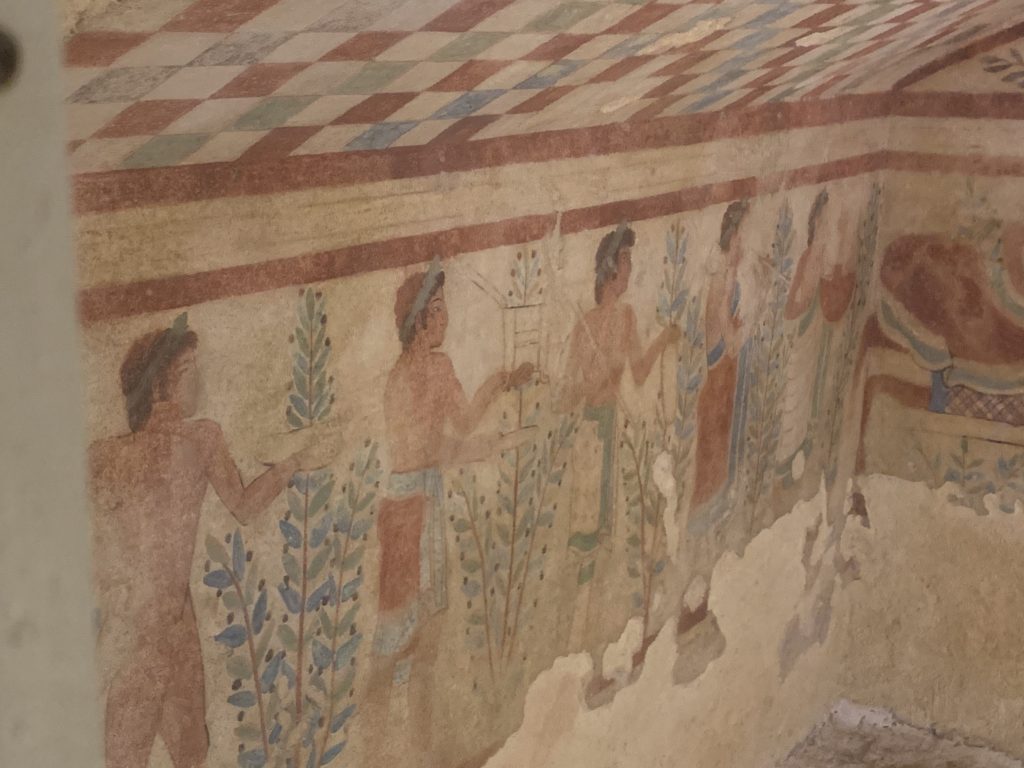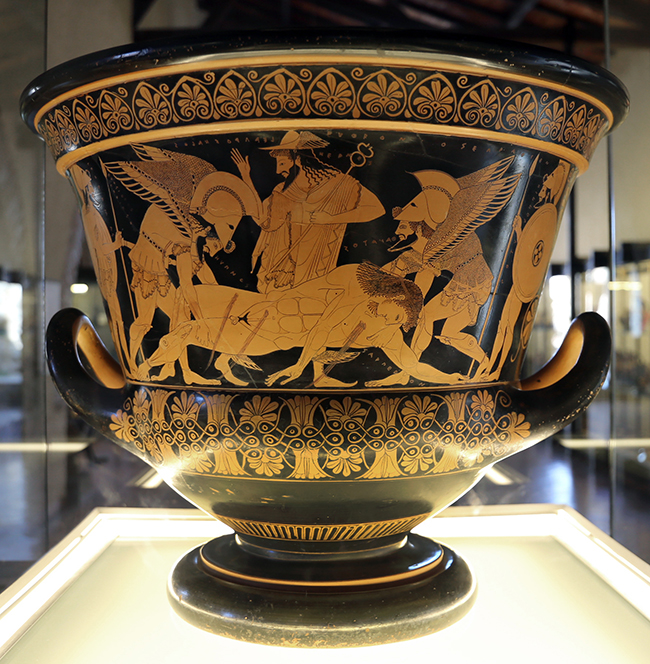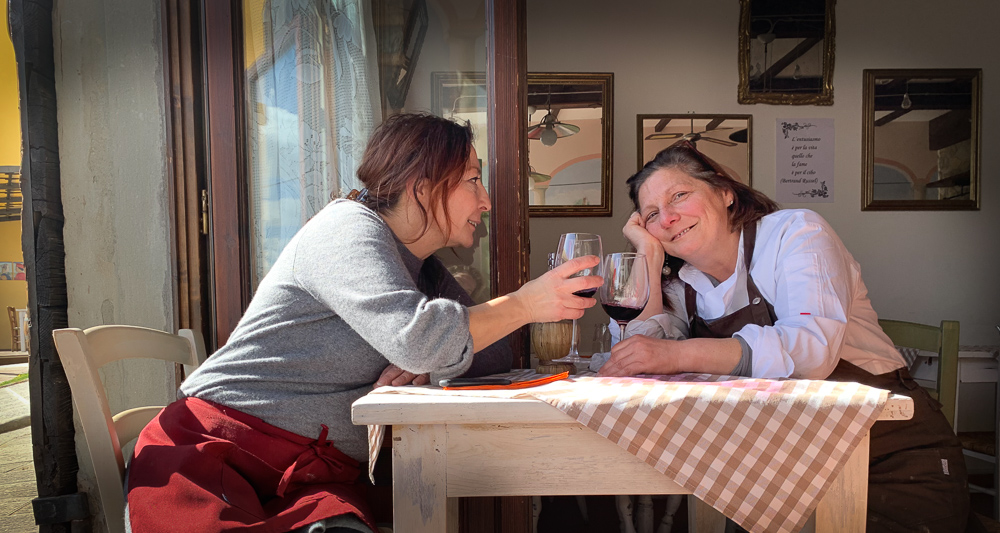The affair
When Donella was in high school one of her favorite classes was art history. This was curious to me as I’d tried to interest her in this subject throughout her life with absolutely no success; I used to be fairly passionate about art history and had even done a yearlong work/study program at a London auction house. After we moved to Italy it seemed relevant that she could tell a Parmesan from a Parmigianino, but she was deeply disinterested. One day when we were in Arezzo and she took me into a church to see the Cimabue Crucifix and I knew something had changed.
It all had to do with her art history teacher. There’s a certain type of small-town Italian beauty aesthetic that I find endlessly fascinating. The opposite of the French less is more mantra, this type of Italian woman believes that more is more—there’s nothing shiny, sparkling, towering, tight, or colorful that’s ignored, often in the same outfit. I adore this as it’s completely independent from natural beauty, designer trends, or idealized body type. When the Italian small-town woman is wearing gold stilettos, a tight leopard-patterned skirt, and a purple fur jacket, and is properly made up with heavy makeup and perfectly-styled, vibrantly dyed hair there is simply nothing she can’t do, no head she can’t turn, no man she can’t have. I watch in endless fascination, clothed in my uniform of jeans, oversized sweater, and distressed sneakers, wondering if I’ve ever felt this kind of female superpower.
In this realm, the art history teacher reigned supreme. She was in her seventies and Donella would often report the day’s curatorial choices to us. “Tight leather pants, over the knee platform boots, and a gold lame sparkly, tight sweater.” The class was mainly girls, and they all followed this woman’s every move closely, like groupies.
She obviously was covering the curriculum, hence the Cimabue detour, but as in all things in Italian education most of the real learning was off-syllabus. One day a female student was obviously upset and not paying attention. The teacher halted the lesson and asked what was happening in her life. The girl, tears pouring down her face, revealed that she’d just had a breakup with her boyfriend. The teacher promptly said that they needed to turn their focus from Renaissance perspective to much more important things, and to circle the chairs around. The couple of boys in the class sat in the perimeter.
The relationship story was revealed, with much commiseration, and then it was the teacher’s turn. She counseled the girls that they really had to watch who they fell in love with because the wrong choices could bring great complication. She, for instance, had been married for many years, but also had been having a long-term affair with another teacher down the hall, in the same school, who many of the students also had as a teacher. Her husband and lover even shared the same last name. Although she loved both men this romantic triangle had made all of their lives difficult and perhaps this romantic situation might have been better to avoid.
Donella came home that day with her eyes particularly wide as this was the kind of curriculum she hadn’t run across in school in California.
……. More to come on educating kids in Italy.


